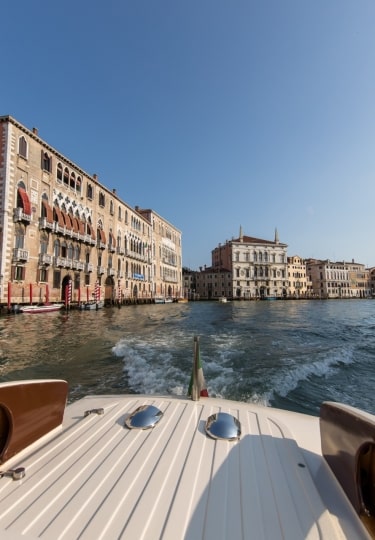Italy mesmerizes teens with its mix of ancient historical sites, dazzling art, beaches, and buzzing piazzas. There’s no better place to explore as a family.
Settle into the laid-back Mediterranean life by strolling streets and squares dotted with eateries proffering rainbow-colored gelato and some of the world’s best pizza. Spend time browsing cobbled streets for glass jewelry, leather bags and belts, vintage finds, and other memorable take-home treasures.
Most importantly, take in some of Italy’s magnificent cultural sites, whether you want to learn more about the tragedy of Pompeii, set eyes on Michelangelo’s David, or gaze at the shimmering mosaics inside Venice’s Basilica di San Marco.
Here are eight of the best things to do in Italy with teens.
Walk Through Ancient History
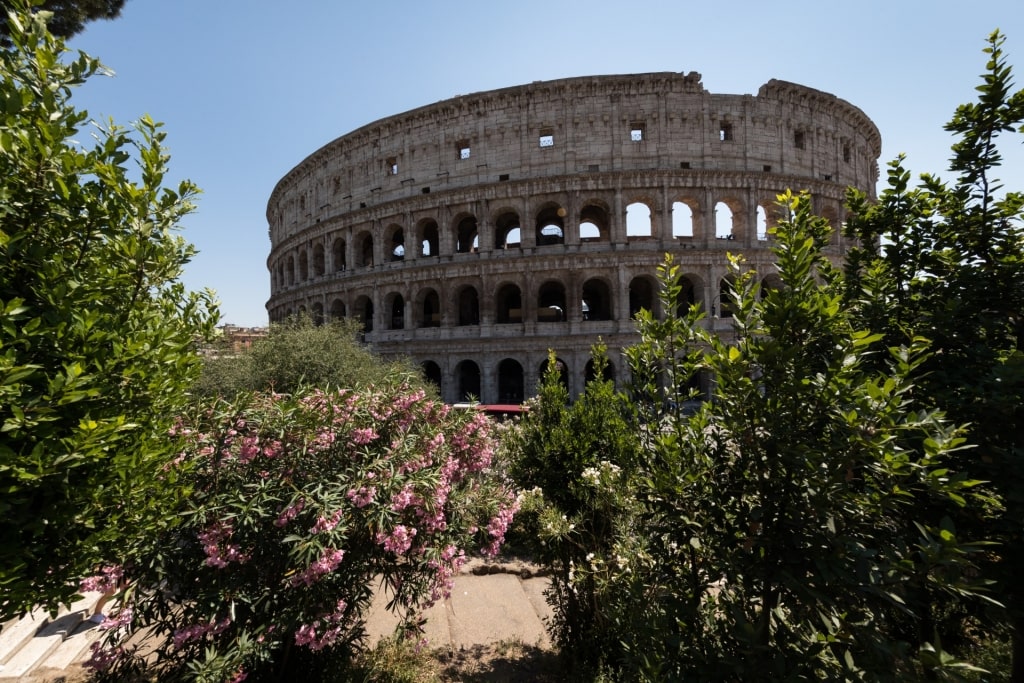
Colosseum, Rome
Exploring ancient sites is one of the classic things to do in Italy with teens; a good guide makes history come alive as no textbook can.
At Rome’s Colosseum, a 70,000-person arena inaugurated in 80 AD, you can time-travel back to an era of bloody combat between gladiators and wild beasts.
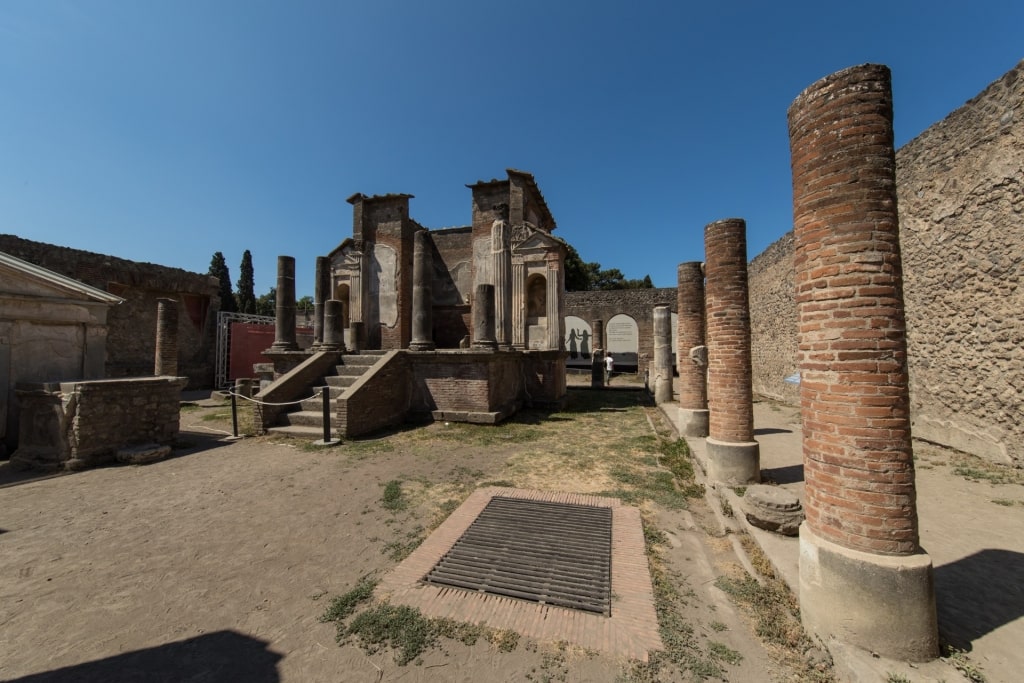
Pompeii
Pompeii and Herculaneum, reached from Naples, fascinate with their frozen-in-time scenes of ordinary life caused by the cataclysmic eruption of Mt. Vesuvius in 79 AD.
You won’t see bodies (in case you’re worried about squeamish kids) but you do see molds or carapaces of a dog and some of the townspeople, preserved in the exact positions they were in at the moment of the eruption.
In less-visited Herculaneum, a smaller neighboring town, you also see empty streets and buildings as well as frescoes and beautifully preserved mosaics.
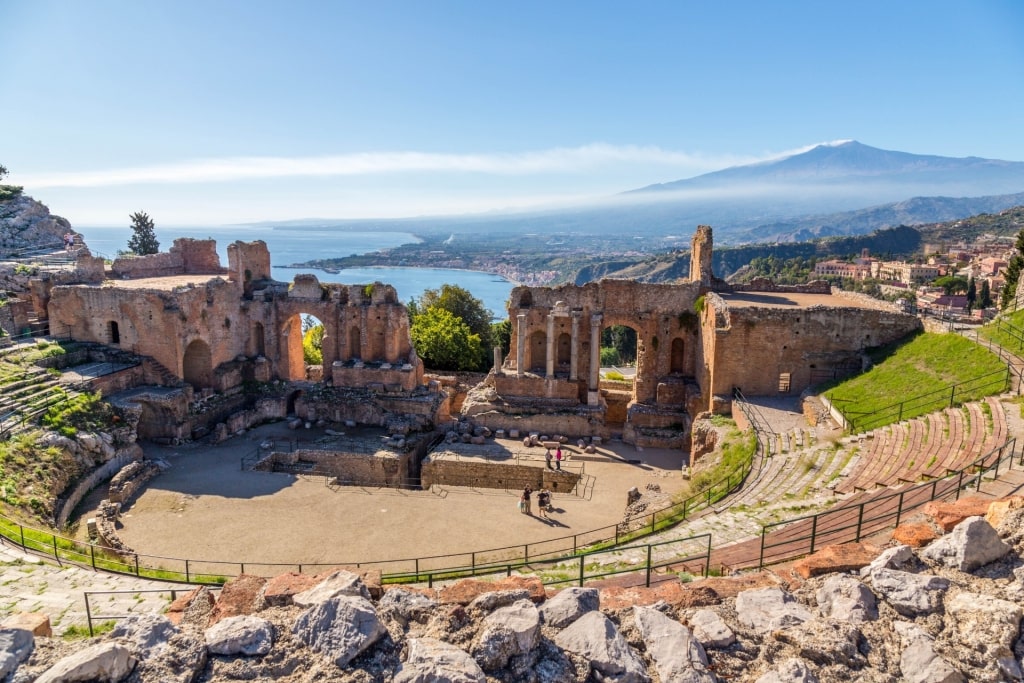
Greek Theater of Taormina, Sicily
In Sicily, to capture Taormina’s most memorable panorama, climb to the top tiers of the Greco-Roman theater for a view of the stadium’s rows sweeping down to the stage where a gap in the wall reveals the blue waters of Naxos Bay and the distant, brooding cone of Mt. Etna, one of the best places to visit in Sicily.
Greeks constructed the arena in the third century BC for dramas and musicals. Romans used the setting for gladiator games. Today, the theater is a popular concert venue in summer and you’ll often see it all set up for a big performance.
Marvel at Masterpieces
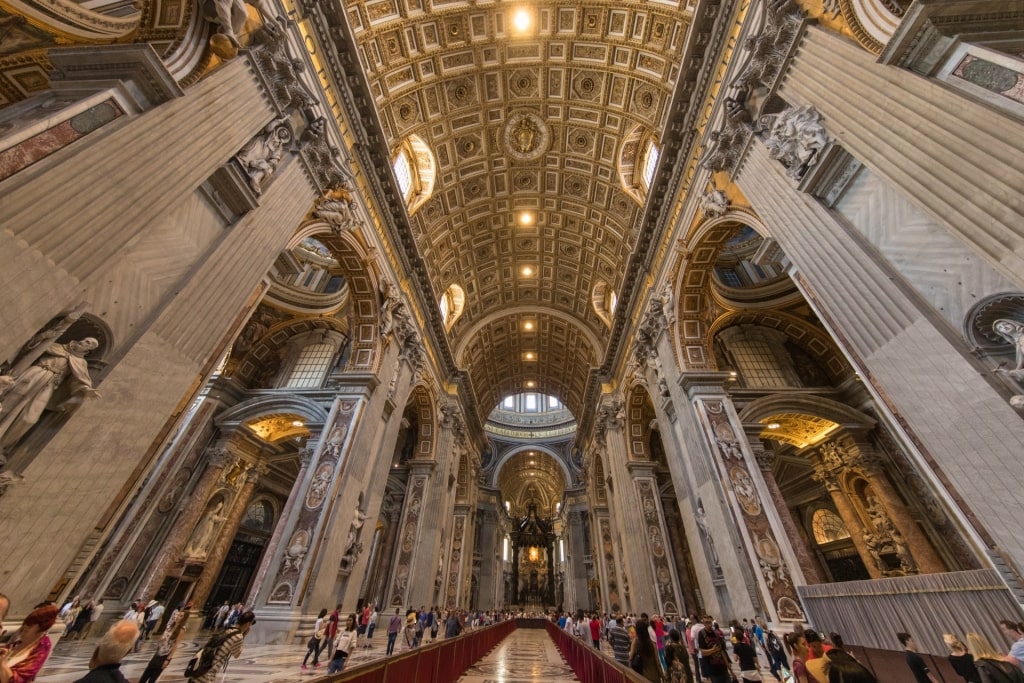
Basilica di San Pietro, Vatican City
Getting up close to timeless art is one of the best things to do if you’re traveling in Italy with teens, especially if you want to further their cultural education.
Visit the Vatican and prepare to be dazzled by Bernini’s altarpiece and Michelangelo’s masterwork in marble, The Pietà.
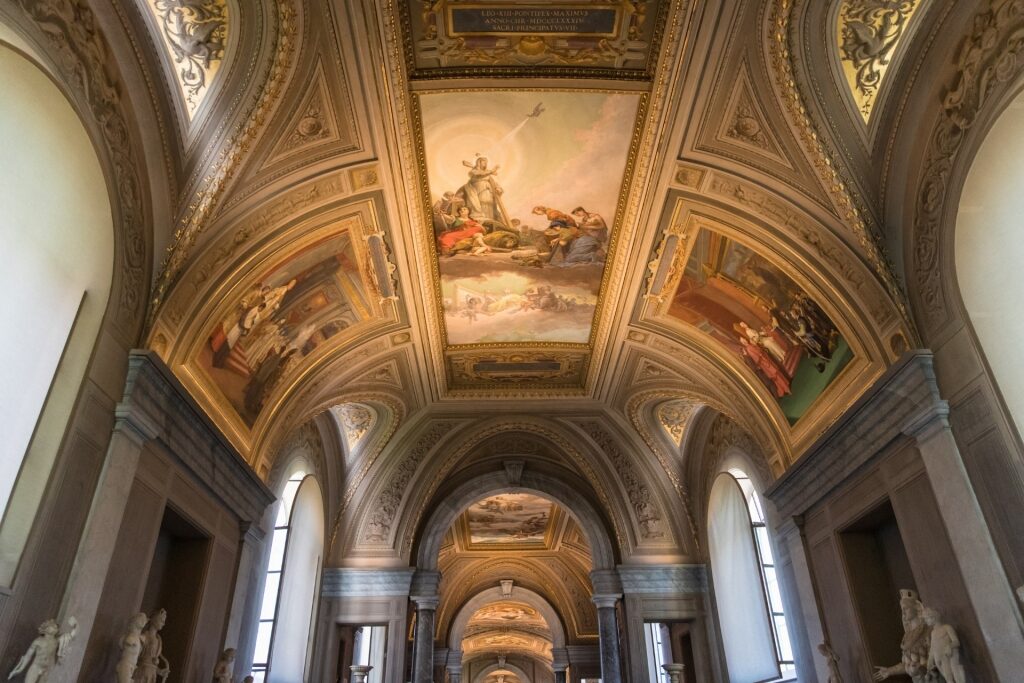
Sistine Chapel, Vatican City
This exquisite sculpture is displayed in the Basilica di San Pietro (St. Peter’s Basilica). You’ll see Michelangelo’s magnificent frescoes, meanwhile, on the ceiling of the Sistine Chapel.
The Medicis, a moneyed Renaissance dynasty, bejeweled Florence with paintings and sculptures. If you have time for just one museum to explore art in Florence, book advance tickets for the Uffizi Gallery, a showcase for Botticelli’s Birth of Venus, Caravaggio’s Medusa, Leonardo Da Vinci’s Annunciation, and other renowned works.
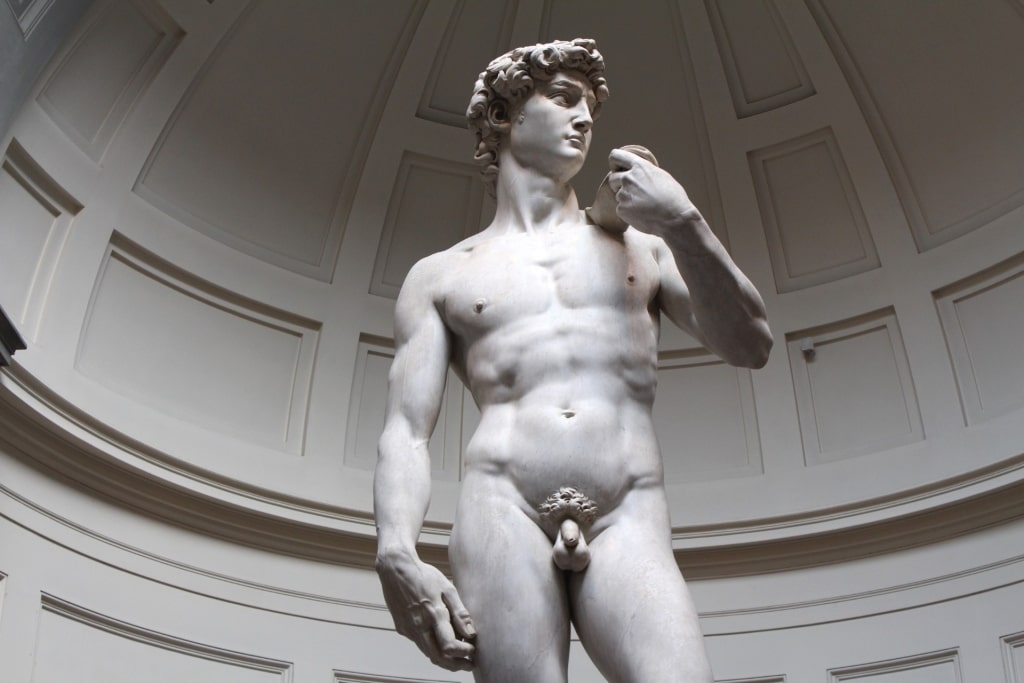
Galleria dell’Accademia, Florence
See Michelangelo’s extraordinarily lifelike David at the Galleria dell’Accademia. His unfinished works in the Hall of Prisoners help unwrap how the artist turned stone into impressive statues.
Venice’s Peggy Guggenheim Collection presents vibrant cubist, abstract expressionist, surrealist, and other modern genres in a palazzo that served as her home.
In the graceful but not grand setting, teens easily connect with works by Picasso, Braque, Dali, Klee, Kandinsky, Chagall, and Pollack. The manicured sculpture garden here is a magical space of greenery graced with pieces by Moore, Giacometti, Ernst and others.
Sun & Swim at Beaches
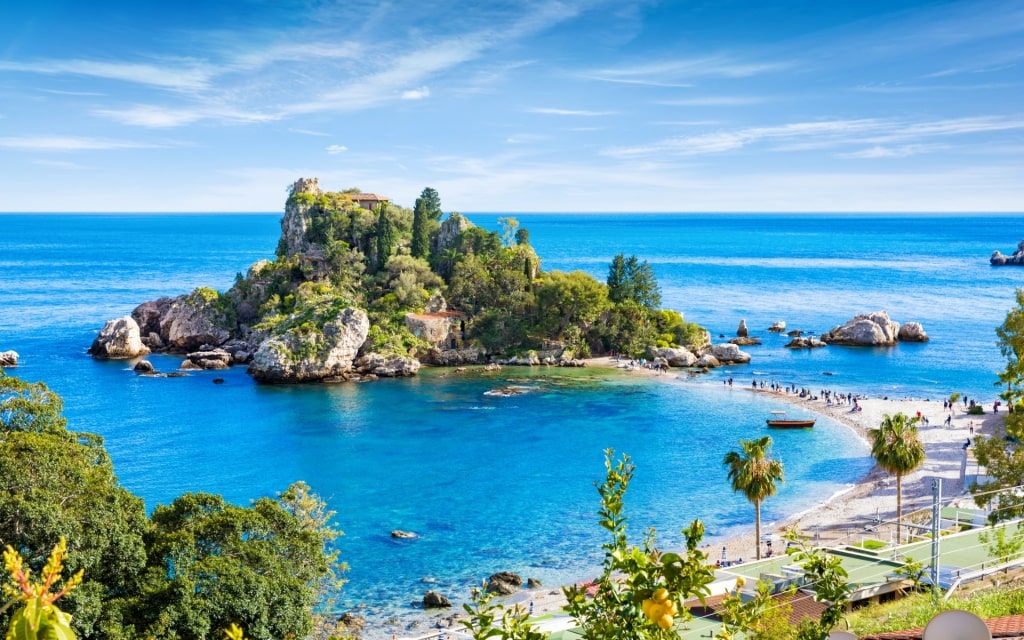
Isola Bella Beach, Taormina
Since most teens crave beach time, especially in the heat of an Italian summer, adding beaches between tours of cultural sites is the best way to please everybody.
From Taormina, famous for its Greco-Roman theater, you can soak up the sun at several beaches. To reach Isola Bella beach, named for the rocky islet it overlooks, ride the cable car in Taormina to Mazzaro, then walk down to the pebbly but beautiful strip. At low tide, there’s a sandy stretch too.
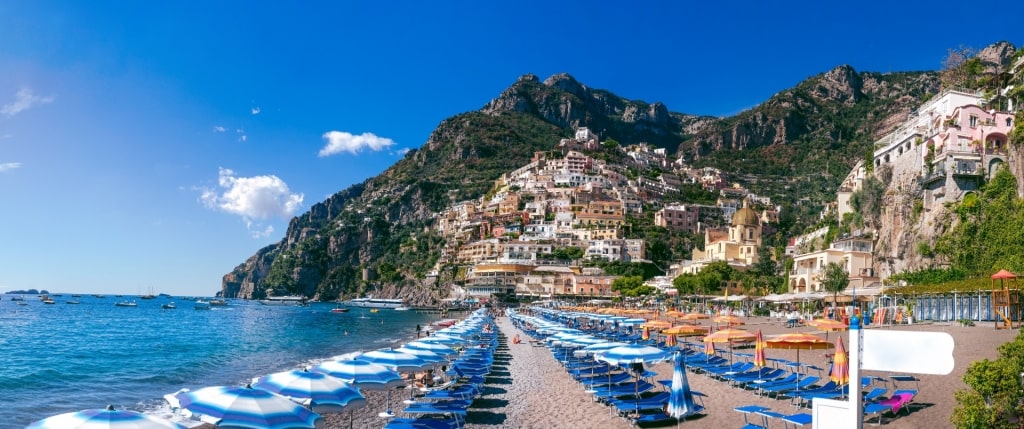
Positano
In pretty Positano, home to some of the best beaches on the Amalfi Coast, houses cascade down the hillside to the shore. Spiaggia Grande beach, the bustling central strand, is a 985-foot long swath, while nearby Fornillo Beach is quieter.
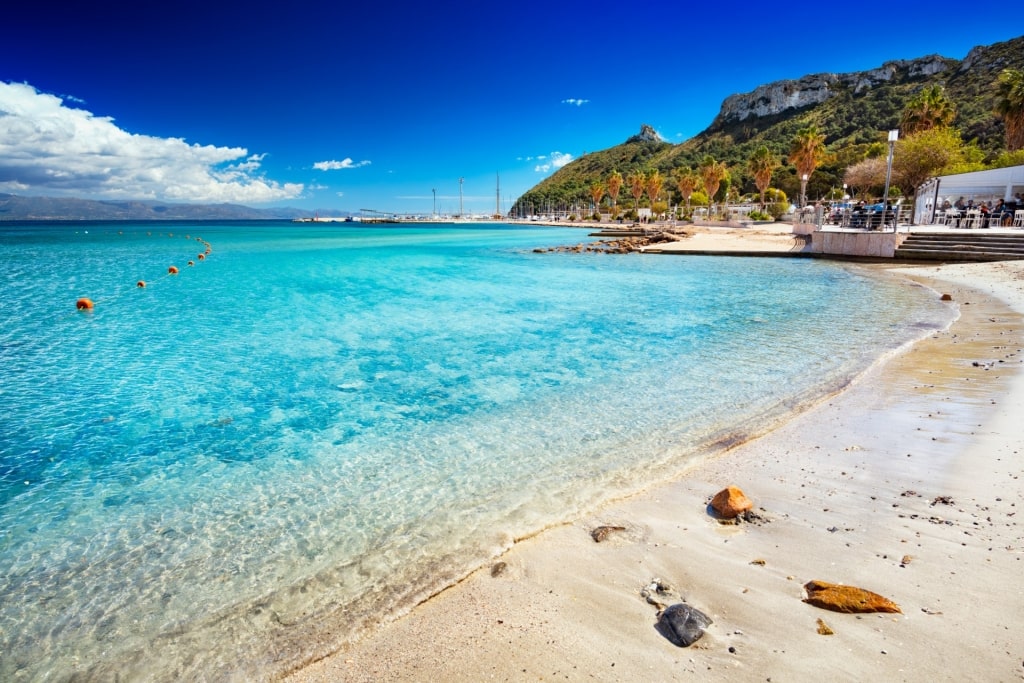
Poetto Beach in Cagliari, Sardinia
The broad, white sands of Poetto Beach, the pride of Cagliari in Sardinia, stretch for five miles. One of Italy’s most beautiful beaches, Poetto’s relatively calm sea and gentle slope make playing in-water Frisbee or kayaking with your teens easy.
In Capri, try Bagni Di Tiberio, a rocky stretch with a private club and restaurants. Book a private boat tour ahead of time to reach some of the best sandy beaches secluded in coves.
Soak in the Scene By Strolling
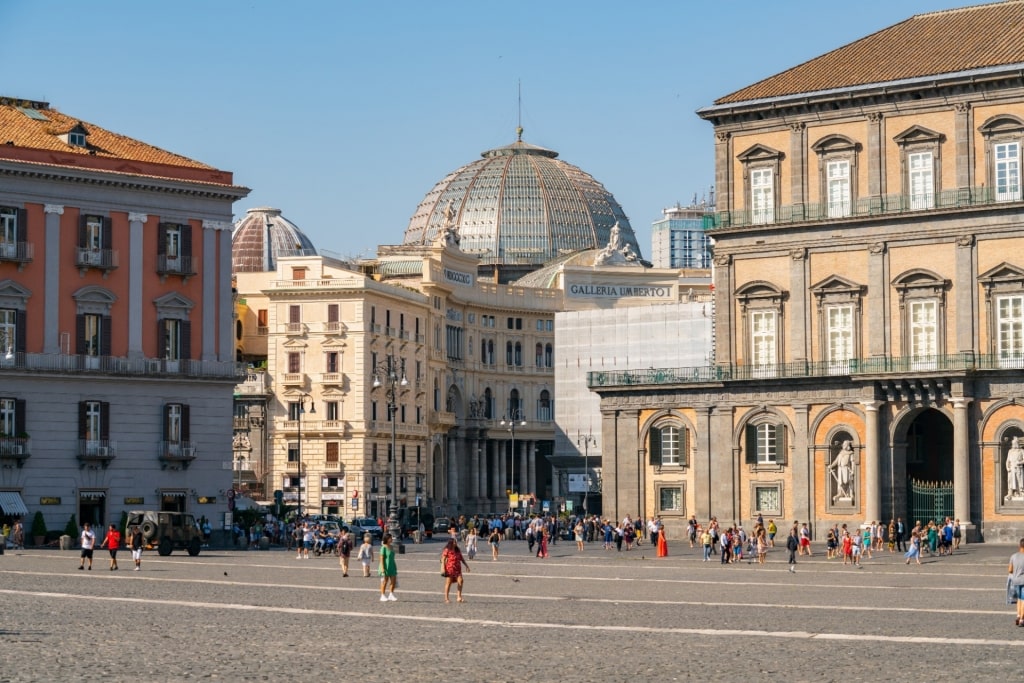
Naples
Play to your teens’ sense of urban adventure by strolling, a prime way to experience a sense of place; in the evenings, you’ll see that the passeggiata, the sunset stroll, is much-loved by Italians of all ages.
One of the best things to do in Naples is to walk the Via Benedetto Croce, a lively mix of shops, bars, bakeries, and cafés. The street intersects with the Spaccanapoli, the main avenue that bisects the city’s historic center.
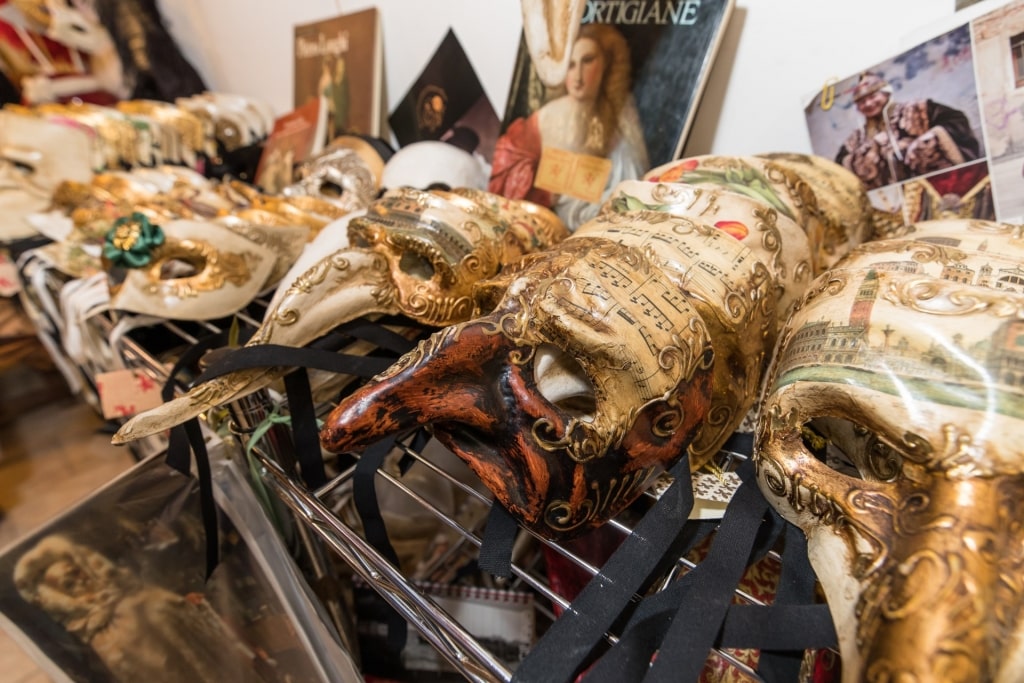
Venetian masks
Venice’s absence of cars and the fairytale setting of pastel palazzos reflected in the canal waters make this beautiful Italian city a walker’s delight. Almost any street winds you past shop windows blooming with feathered masks and trays of rainbow-colored gelato.
Eventually, you land in a square graced by a centuries-old church, where street vendors sell strings of red and green glass beads, masks, and other sidewalk treasures.
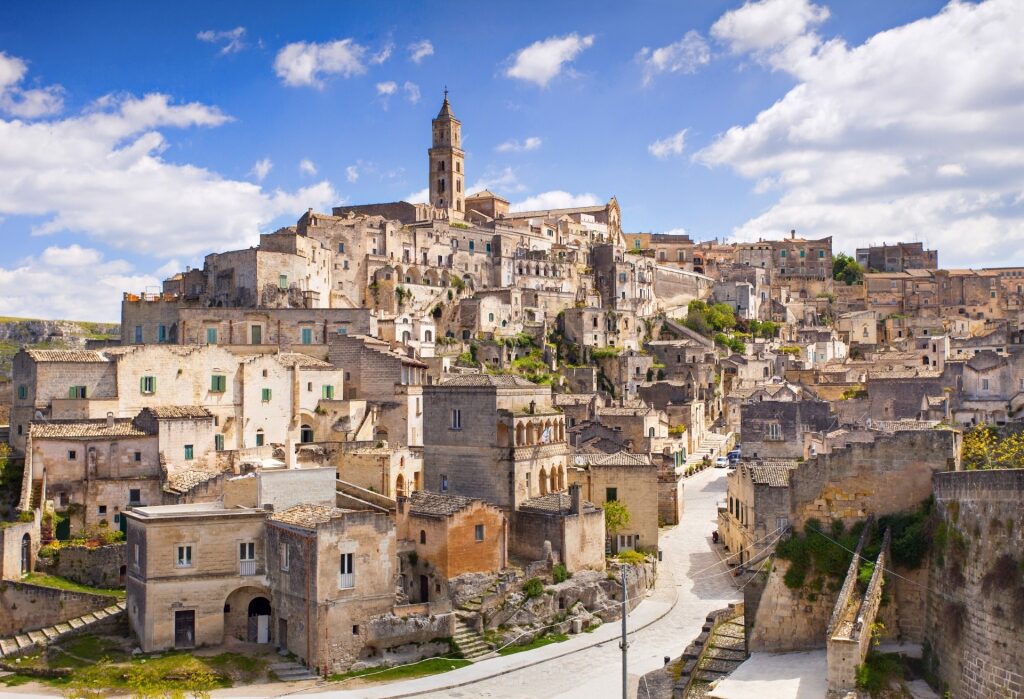
Matera
Experts rank Matera, in the far south of Italy, as the third oldest inhabited city in the world.
In its Sassi area, a UNESCO World Heritage Site noted for its troglodyte dwellings, wend your way along cobbled streets and climb stairways past tiny stone houses that rise above ancient cave shelters.
See if you can recognize Matera from the many movies in which it’s played a starring role.
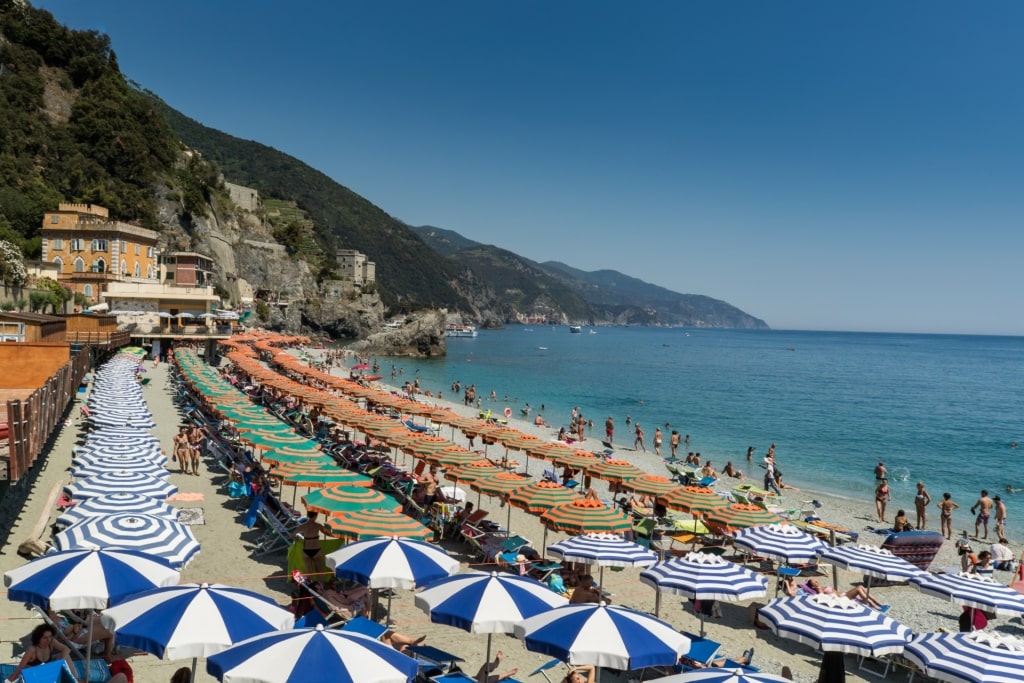
Monterosso
Finally, on a tour of the Cinque Terre, a sensationally beautiful coastal national park near Portofino, you can wander through tiny alleys and sunlit squares of the five tiny fishing villages. Bring beach gear as a wander around Monterosso can end with a dip from the sandy beach.
Go on a Pizza Safari
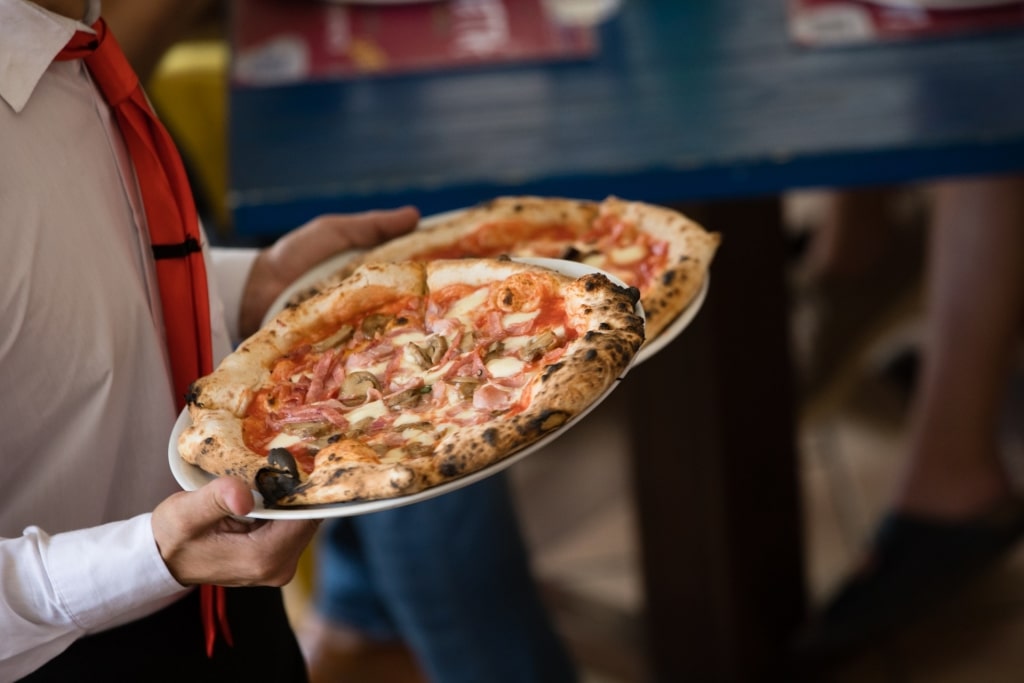
Naples pizza
A pizza safari, a trip-long taste test in which you rate your greatest slices, is something no teenager is likely to complain about.
Naples is the birthplace of pizza, which makes it one of the best food cities in Italy. In the 18th century, the tomato-topped, flatbread-like dough filled the need for an inexpensive food for the city’s working poor that could be eaten on the fly. Da Pietro, Naples’ first pizzeria, opened in 1760.

Margherita pizza
When Queen Margherita and King Umberto visited Naples in 1889, as the story goes, they sampled a pie topped with soft white cheese, red tomatoes, and basil. The queen loved the toppings, and this formula came to be known as the Margherita.
Naples pizza must meet strict requirements to receive the Vera Pizza Napoletana sign, proof of authenticity by the Associazione Verace Pizza Napoletana.
The pizzaiolo, the pizza maker, must use highly refined Italian flour, San Marzano tomatoes, and mozzarella cheese made from the milk of cows or buffalos raised in Campania or Lazio regions of Italy. The basil must be fresh and the olive oil extra-virgin, the pie baked in a wood-fired oven.
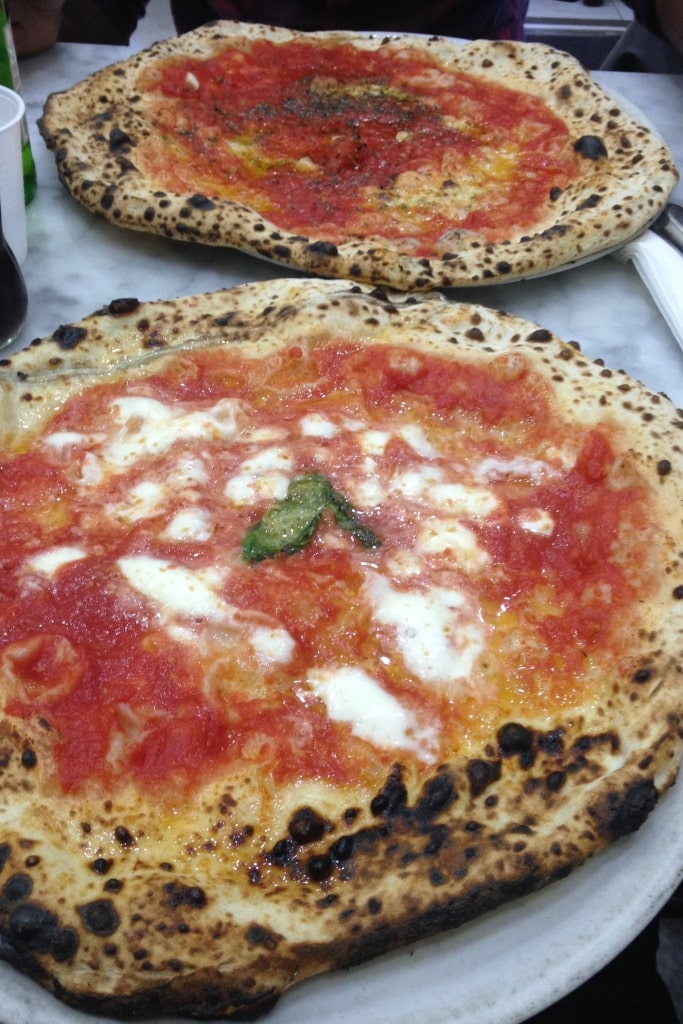
L’Antica Pizzeria da Michele
For traditional slices in Naples, line up at L’Antica Pizzeria da Michele, founded in 1870, and Di Matteo, opened in 1936. For tasty classics and scrumptious variations, try Sorbillo, 50 Kalo, and Starita.
A typical pizza in Rome comes with a crunchier crust than a Neapolitan pie, and toppings range far from Naples tradition. Among the many Roman pizzerias serving great pies are Panattoni, Piccolo Buco, and Pizzarium.
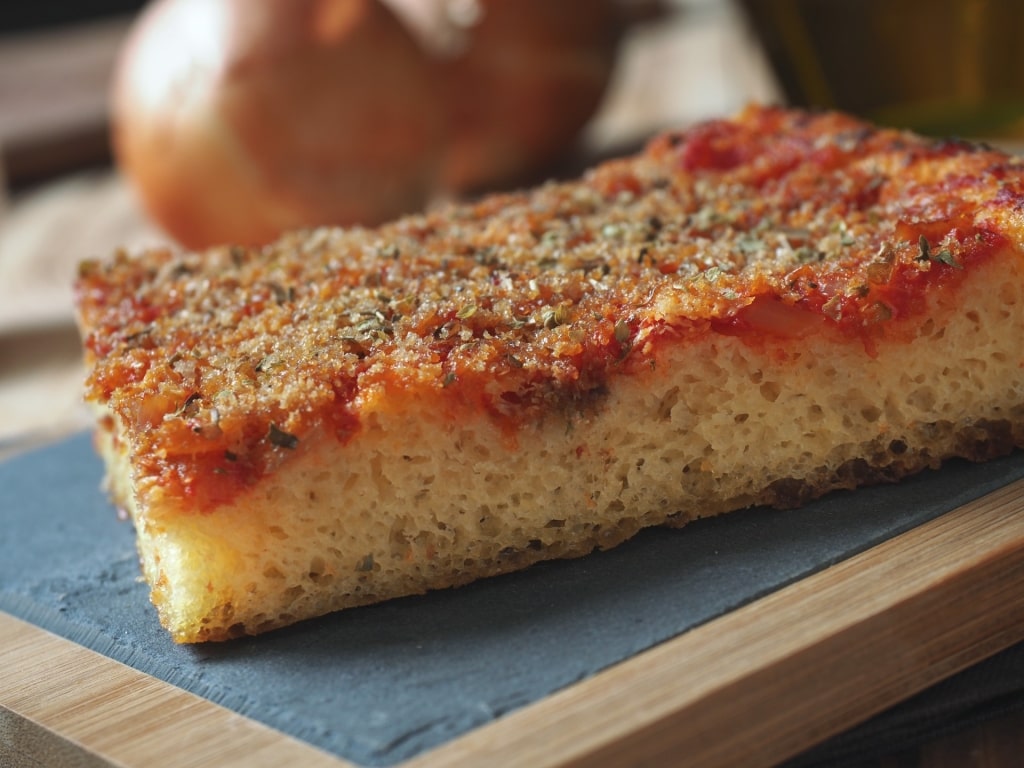
Sicilian pizza
Sicilian pizza, made with a square-shaped, thick, spongy dough, likely popped out of the oven in the 19th century in the Sicilian town of Palermo.
Typically meatless, the pie is one of the best Sicilian dishes to try. Sometimes called sfincione, it is topped with tomatoes, oregano, red pepper, onions, olive oil, bread crumbs, grated caciocavallo cheese, and often anchovies.
In Taormina, try Rosticceria Da Cristina for traditional Sicilian slices. If you’re still peckish, you can’t go wrong with cannoli for dessert—deep-fried pastry tubes stuffed with deliciously sweetened ricotta, a specialty here.
Get Active Outdoors
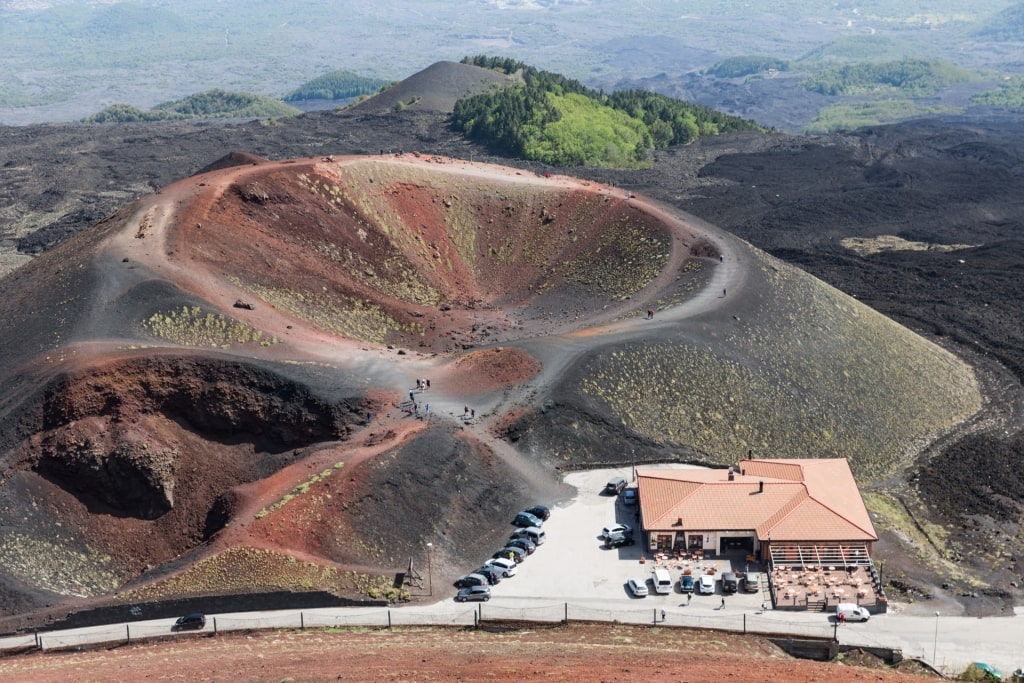
Mt. Etna
Harness your teens’ energy with outdoor adventures. Discover Mt. Etna’s old lava flows and craters on a guided hiking or biking trip. It’s best to go in the morning to beat the afternoon heat.
For sweeping sea views that Italy is known for, ride the chairlift up to Monte Solaro, Capri’s mountain summit, and hike down.
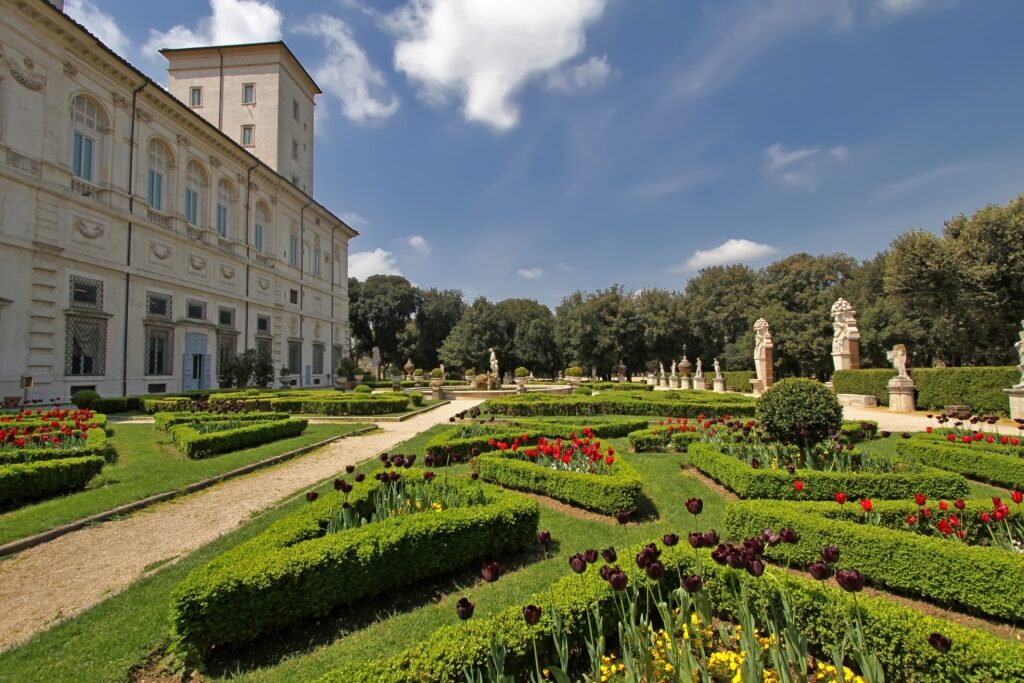
Villa Borghese, Rome
Bike the beautiful Italian gardens of Villa Borghese, Rome’s largest public park, pedaling through the greenery on paved paths past fountains and a lake. Stop to take in the city views from Pincio Terrace.
One of the best things to do in Tuscany is to cycle in medieval Lucca. You can pedal around the city on top of the massive walls.
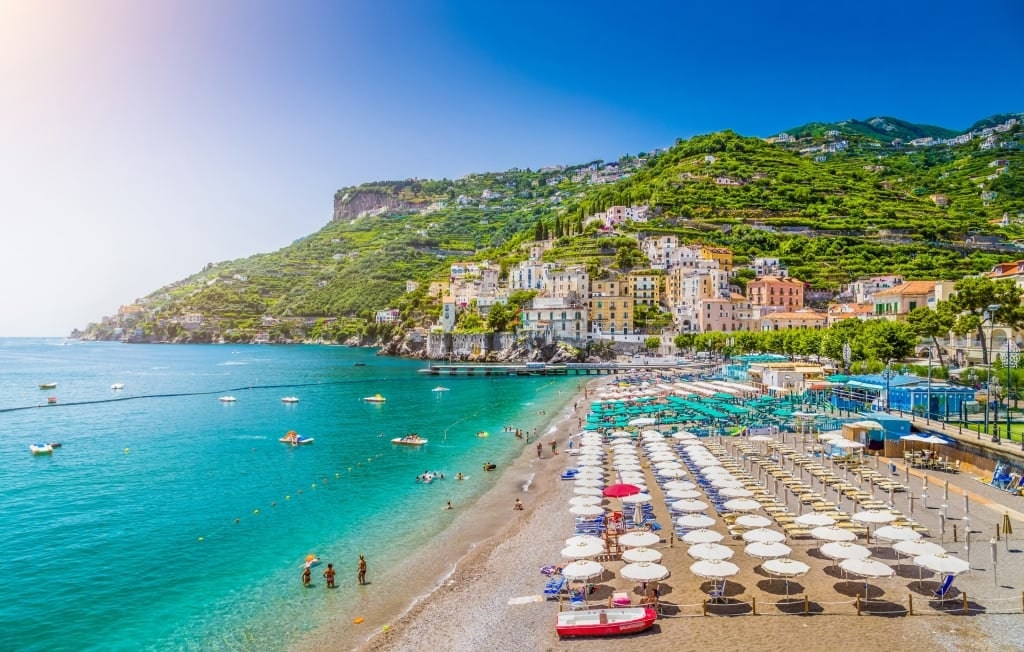
Minori, Amalfi Coast
On the Amalfi Coast in Southern Italy, walk three miles from Minori to Maiori by following the scent of lemons. For more than 400 years, lemon trees have grown along il Sentiero dei Limoni, the Lemon Path.
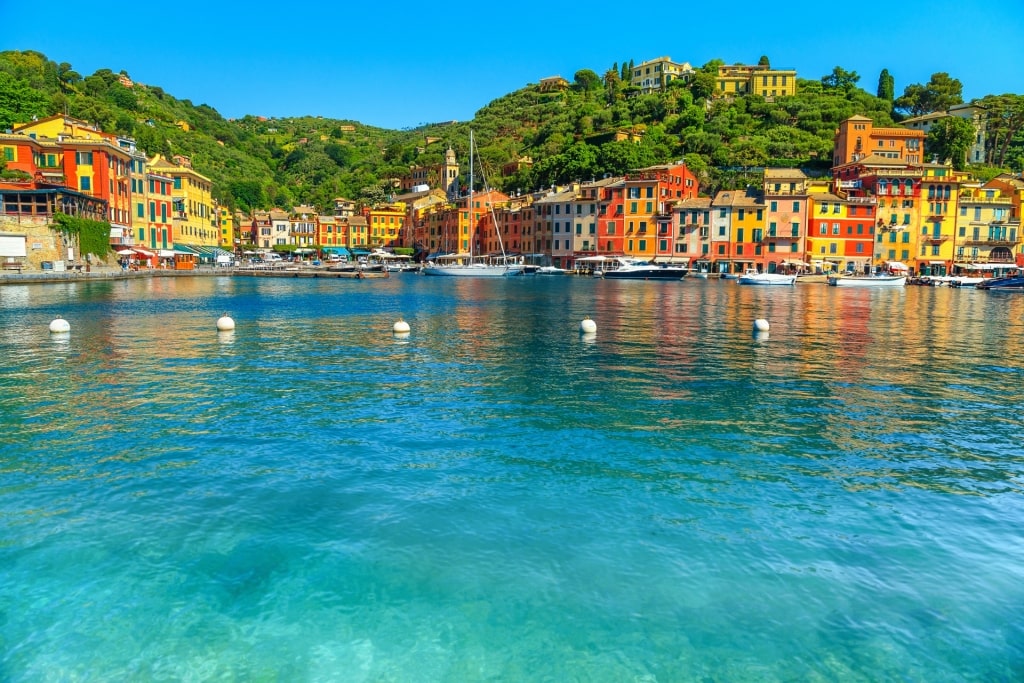
Portofino Bay
Get out on the water, too. Team up to kayak Portofino’s bay. From Naples, zip over to Capri via jetfoil, then board a boat to take in the island’s dramatic coastline.
You’ll see the offshore Faraglioni rocks, a series of dramatic sea stacks, and enter the alluring Blue Grotto, whose waters shine a vivid blue.
When you visit Sardinia, consider a kiteboarding lesson in summer at Punta Trettu, known for its winds and shallow water, or at Poetto Beach after the summer season.
People-Watch in Piazzas
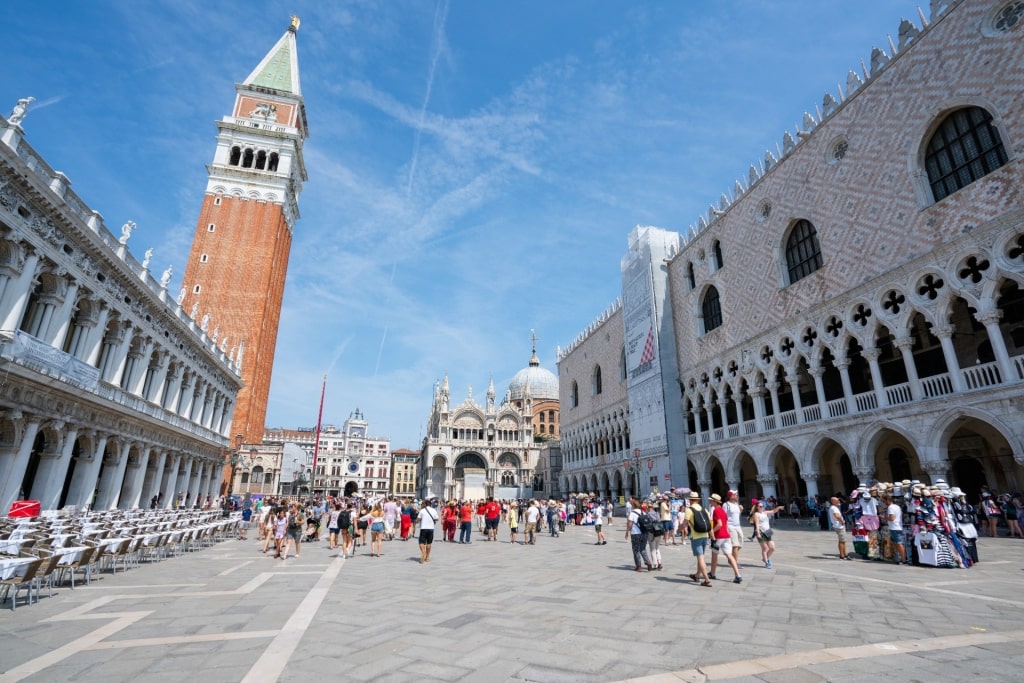
Piazza San Marco, Venice
With its buzzing piazzas, Italy is perfect for satisfying your teens’ need to hang out in happening places. Walking through Venice, you will undoubtedly crisscross Piazza San Marco.
Linger a little so your teens can take in the Basilica di San Marco’s domes, turrets, and arches gleaming in the sunlight. Climb the Campanile (the bell tower) for sweeping views over the square and the ancient city.
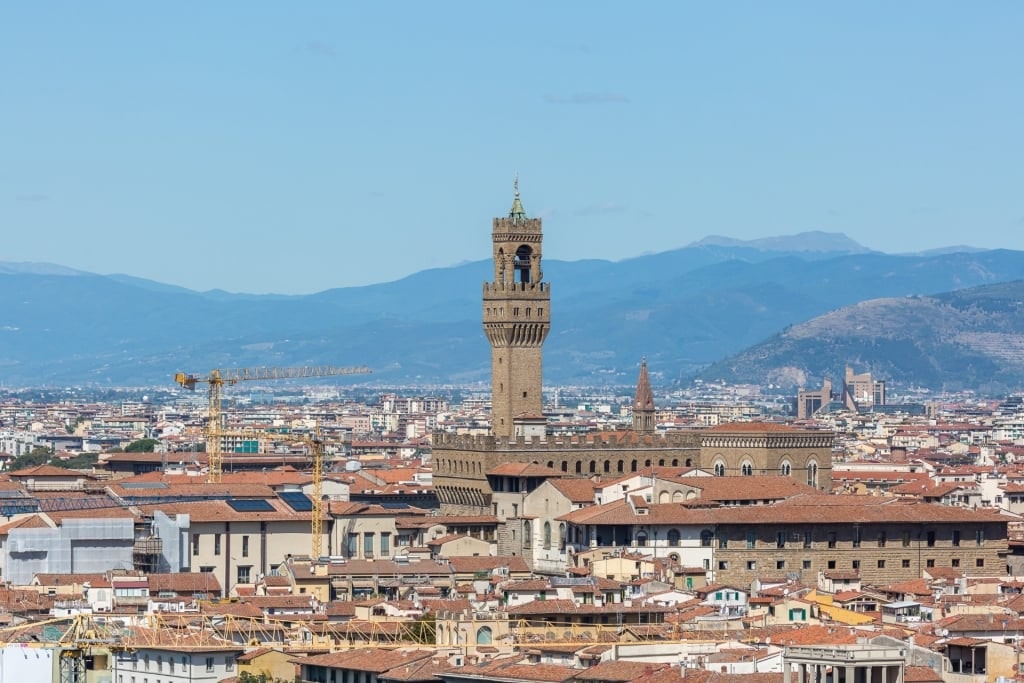
Piazza della Signoria, Florence
In Florence, allow time between museum and gallery visits for sandwiches and snacks in Piazza della Signoria, graced with art, including a copy of Michelangelo’s David and the elaborate Neptune Fountain.
Your teens may want to strike up a conversation with some of the student street artists drawing pastel copies of masterworks on the pavement.
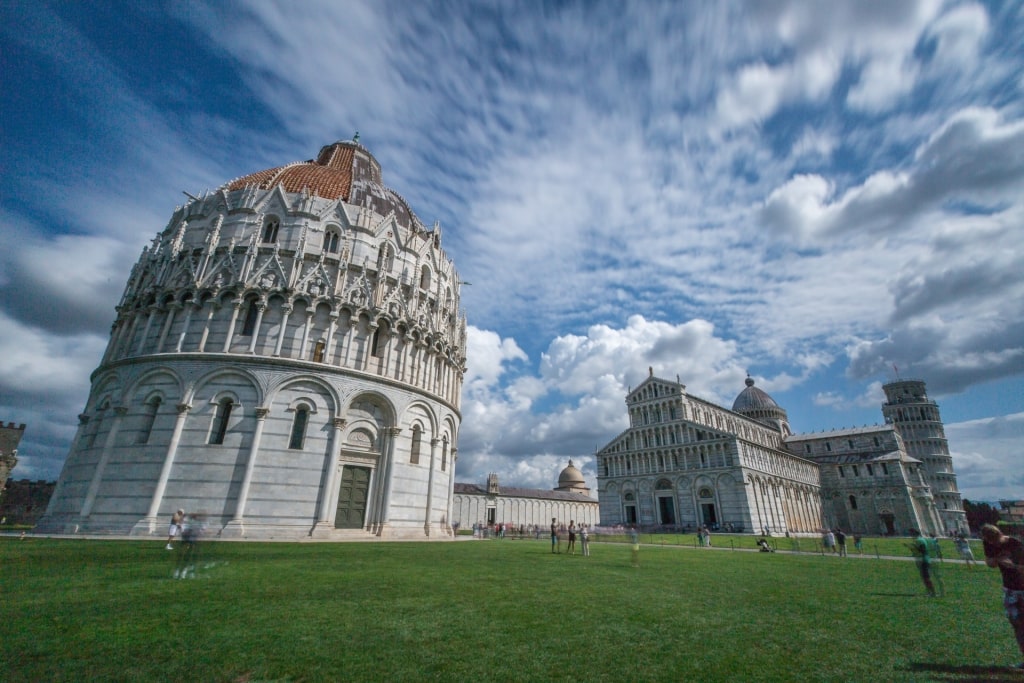
Piazza dei Miracoli, Pisa
At Pisa’s Piazza dei Miracoli, or Square of Miracles, a UNESCO World Heritage Site, snap the requisite selfie in front of the bell tower of the Cathedral of Santa Maria Assunta, commonly known as the Leaning Tower of Pisa.
Begun in 1173, this unique building shifted over time because of the faulty architectural use of a heavy and shallow base for a structure constructed on marshy soil.
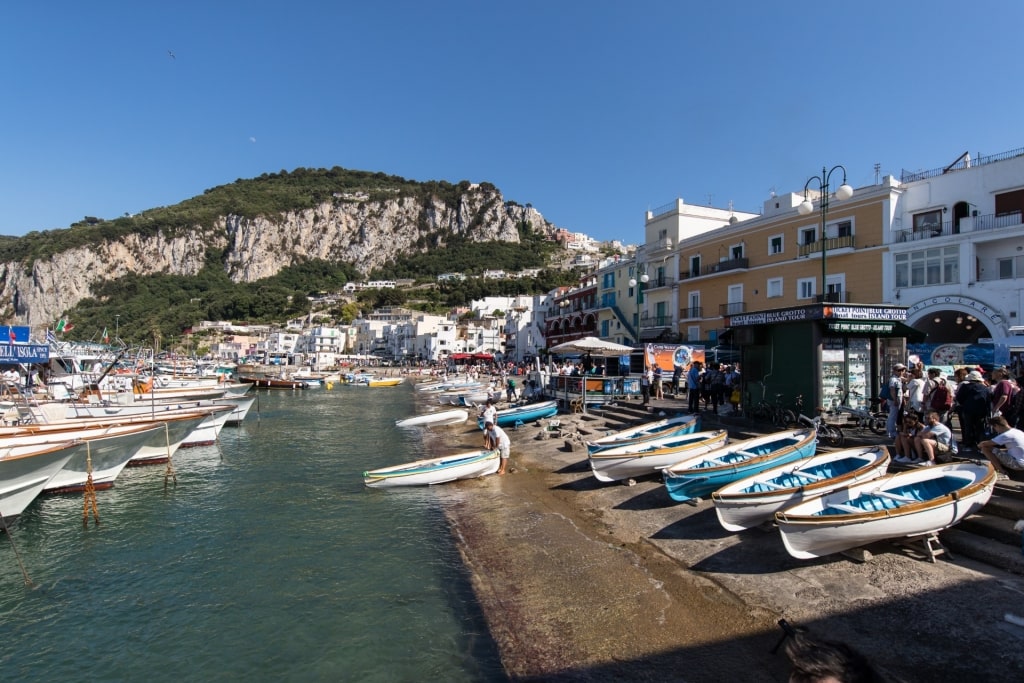
Capri
Soak in the excitement of glitzy Capri at Piazza Umberto I, also known as La Piazzetta, situated in the heart of the town of Capri’s historic district. A clock tower anchors the square. But that’s not why you and your teens—and most other people—visit.
In La Piazzetta, sit at a café and people-watch, seeing if you can spot celebrities. Stop for Italian coffee and lemon-flavored granita, a version of sorbet that’s wonderfully cooling on a hot day.
Shop for Take-Home Treasures
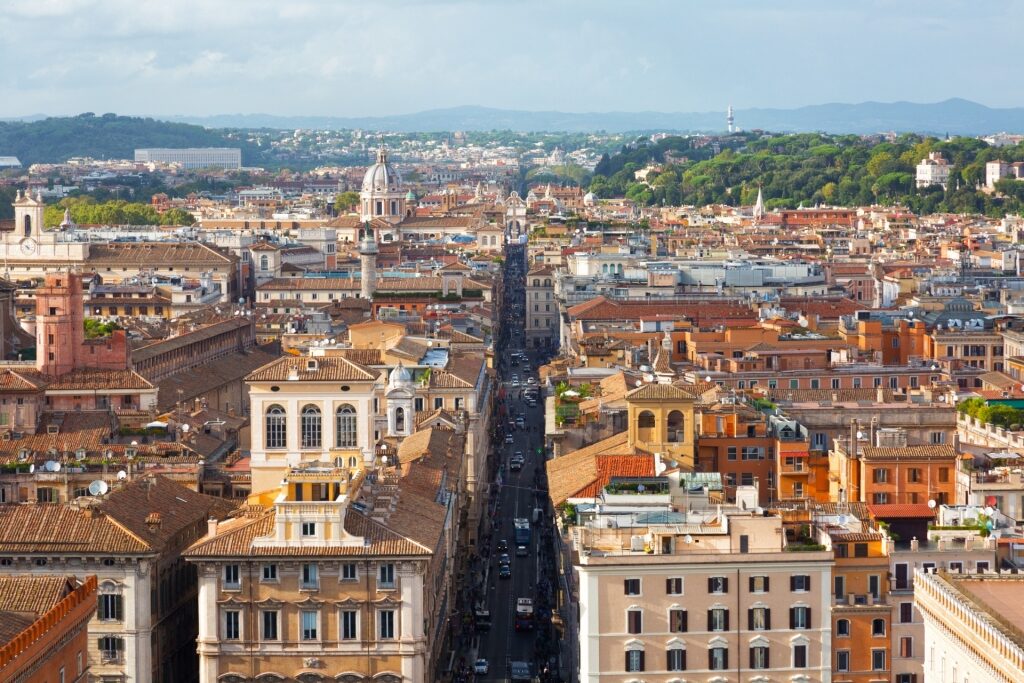
Via del Corso, Rome
Italy abounds with stores and market stalls friendly to teens’ budgets and lifestyles. In Rome, Via del Corso, one of the main shopping streets, blooms with Zara, H&M, and other big brands your teens can buy at home.
For something more local, look for up-and-coming local designers, vintage clothing, and artisan finds in the Monti neighborhood in Rome, especially along Via Urbana and Via del Boschetto.
Picconi Fabio sells vintage costume jewelry, and Tina Sondergard has off-the-rack and made-to-order dresses in 1950s styles.
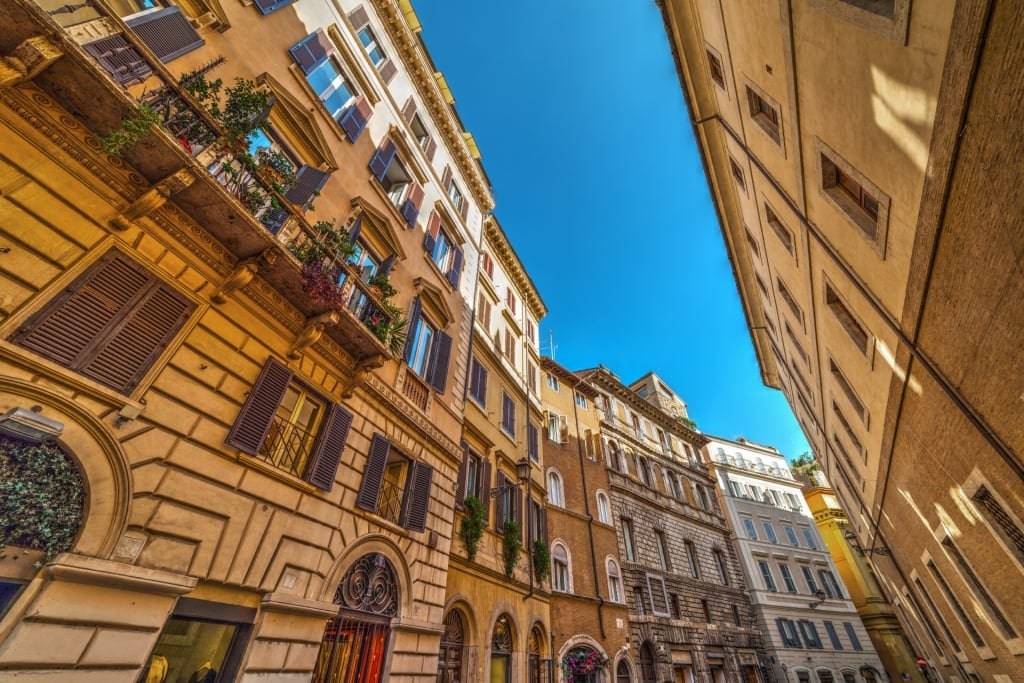
Via del Governo Vecchio, Rome
Near Piazza Navona, stroll Via del Governo Vecchio, a narrow, cobbled street lined with centuries-old buildings, and peek into Kolby for menswear, and Artigianino Governo Vecchio for leather goods. Sermoneta, on the Piazza di Spagna, has been selling fine leather handmade gloves since 1965.
Sermoneta also has a shop in Venice. In La Serenissima, teens like browsing the tiny stores on the Rialto Bridge for necklaces, marbleized paper, T-shirts, and other trinkets.
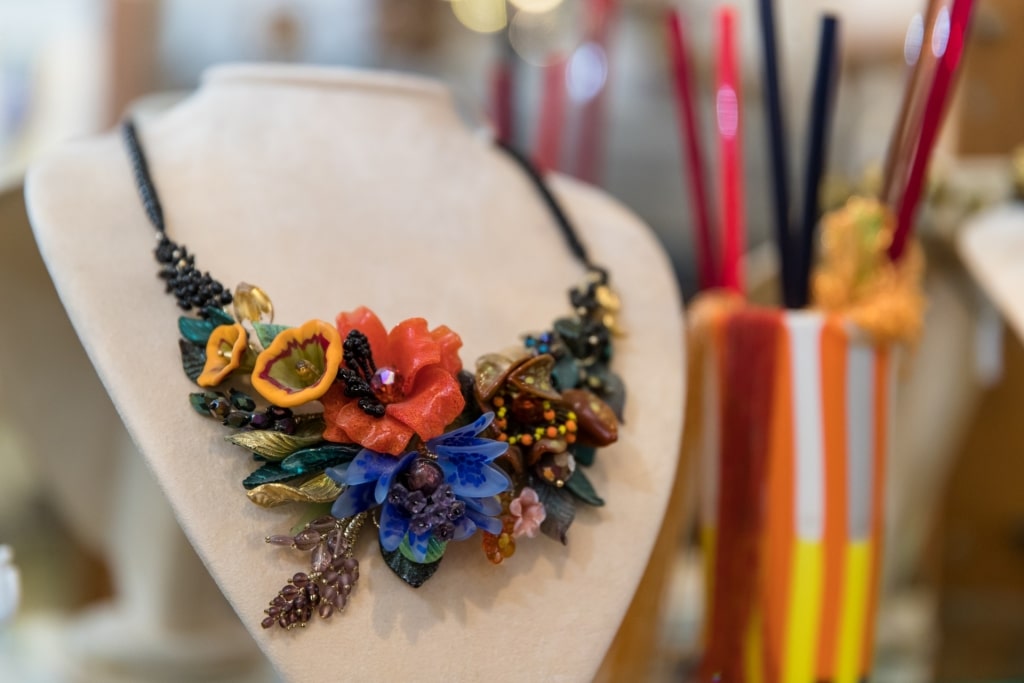
Murano, Venice
Murano’s popular glass factories showcase mostly traditional tabletop and decorative glass—but there’s no end of stores selling colorful Murano glass earrings.
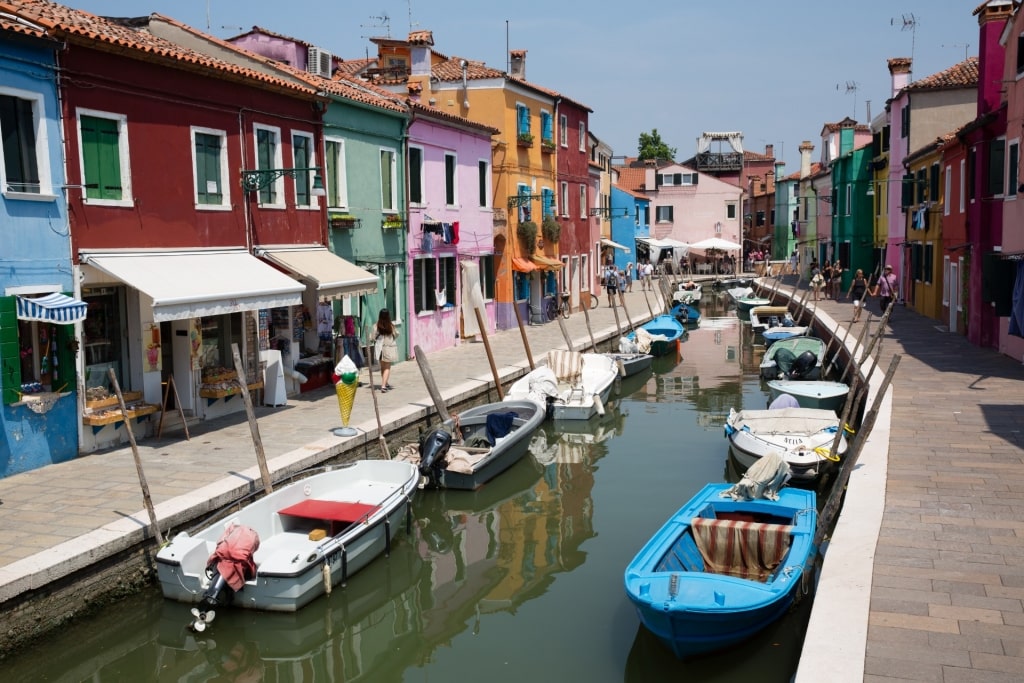
Burano, Venice
On the island of Burano, an Instagrammer’s dream in the Venice Lagoon, brilliantly colored homes line the canal. Some shops sell handmade vases, tableware, and glass Christmas tree decorations of angels, or Santa on a gondola.
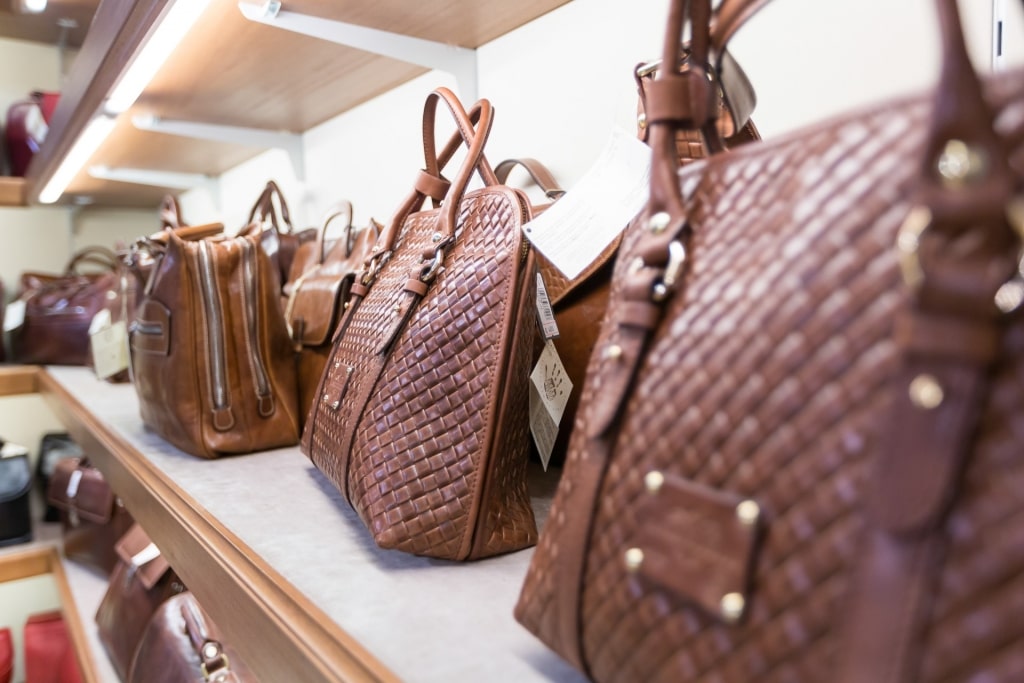
Leather bags
For centuries, Florence has been known for textiles and crafts, one of the many reasons the city is known as one of the best shopping cities in Europe. Jewelers have sold gold necklaces and rings on the Ponte Vecchio since the 13th century.
Oltrarno lies on the other side of the river Arno from the main center and is the place to head. Try on handmade hats at Reinhard Plank and run your fingers over Quoio’s handmade leather bags, wallets, and belts.
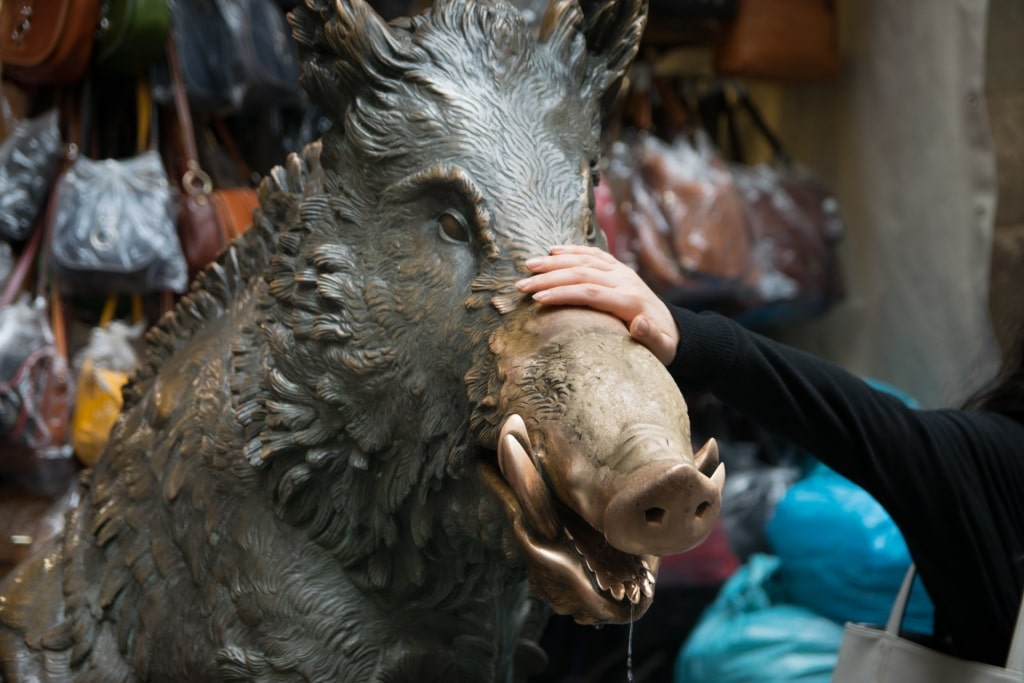
Piazza del Mercato Nuovo, Florence
For street market leather finds, walk the gauntlet of vendors’ racks at the Piazza del Mercato Nuovo in Florence’s historic district. Locals call this Italian market Mercato del Porcellino for its boar statue.
Local lore has it that whoever rubs the statue’s nose will return to Florence, and if you put a coin in his mouth, you will have good luck.
Read: Rome for Families: Best Things to Do with Kids
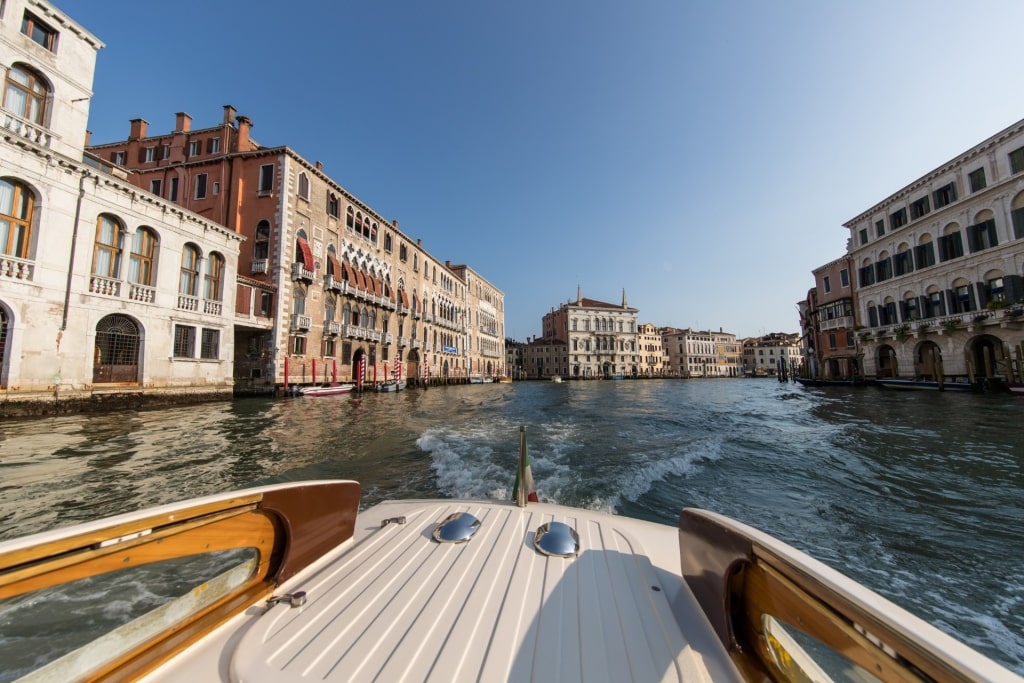
Venice
Are you and your teens excited about Italy? Browse Celebrity’s cruises to Italy and book your dream vacation.
